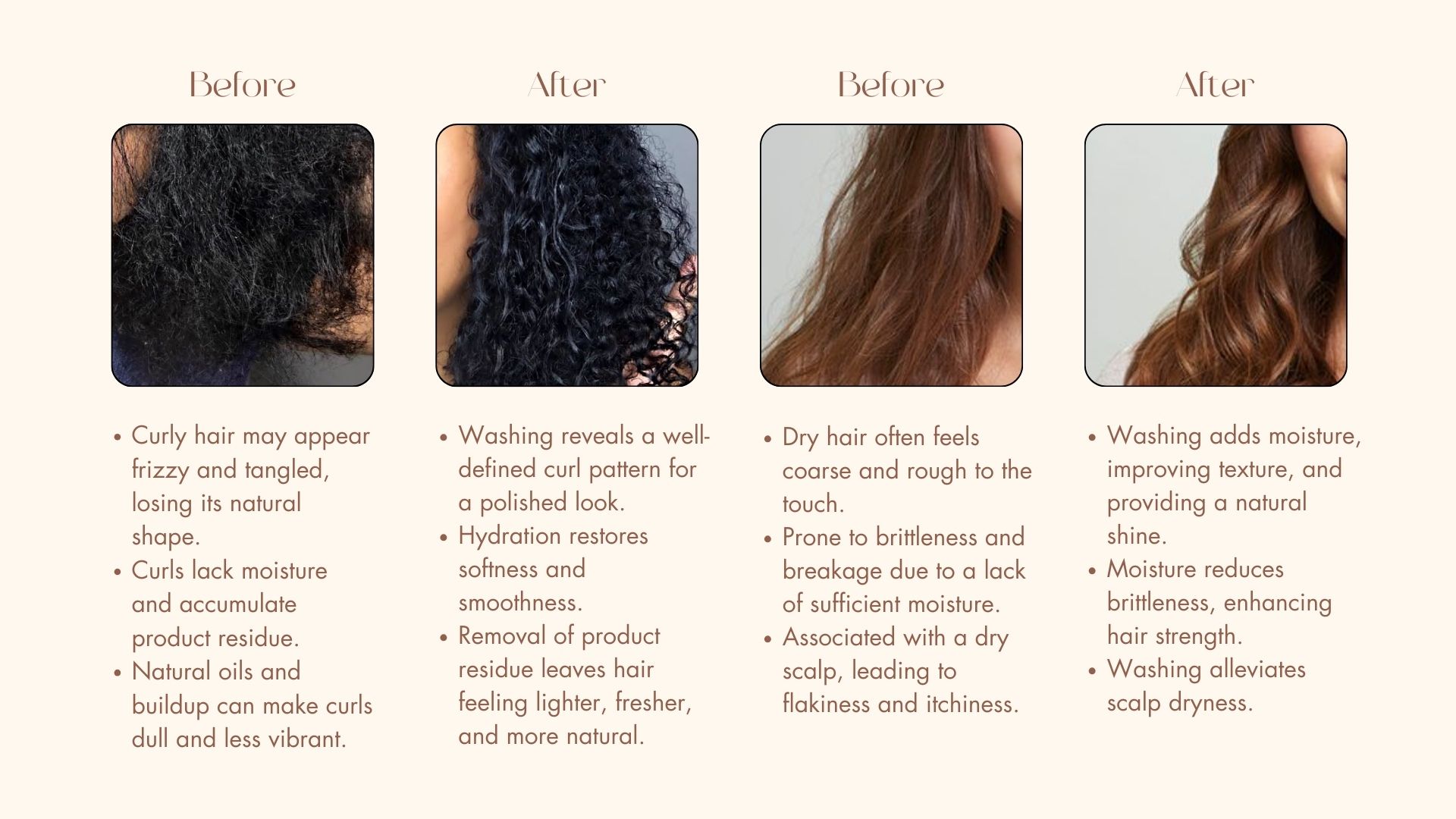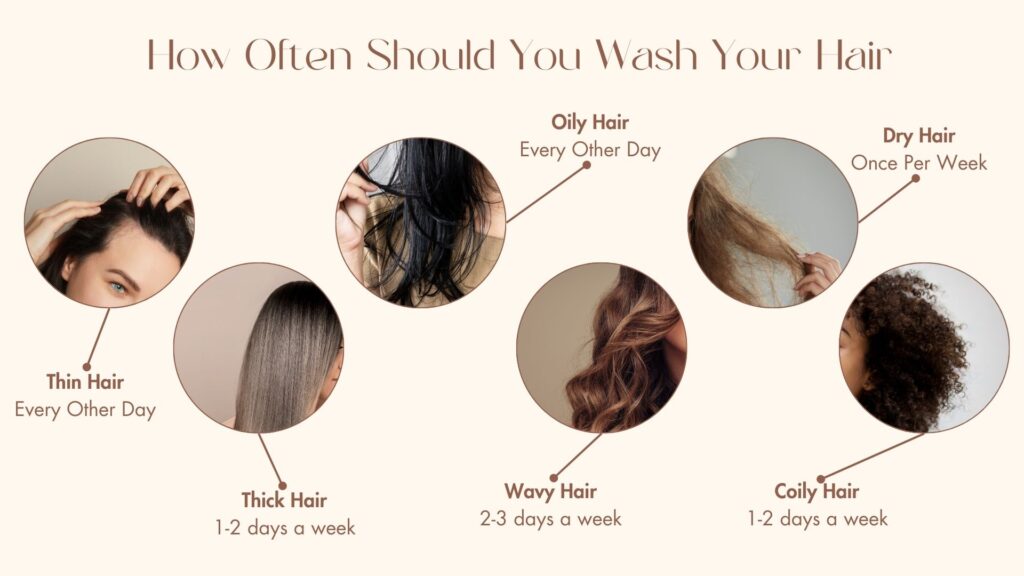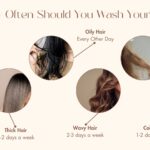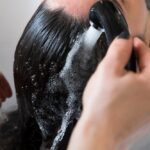In today’s fast-paced world, where self-care and personalized routines are paramount, the seemingly simple act of washing your hair takes on a surprising complexity. We’re bombarded with conflicting advice, from strict daily routines to extended intervals. The question of how frequently to wash your hair isn’t just about hygiene; it’s about understanding your hair type, scalp health, and personal preferences. This isn’t just a matter of aesthetics; it’s about maintaining a healthy scalp and avoiding potential damage. With various hair types and lifestyles, there’s no one-size-fits-all answer. This comprehensive guide explores the factors influencing optimal hair washing frequency, shedding light on the science behind healthy hair and scalp care, and empowering you to make informed choices that suit your unique needs.
Beyond the superficial appeal, the frequency of washing your hair directly impacts your scalp’s health. A healthy scalp is crucial for promoting hair growth and preventing issues like dandruff and dryness. This article delves into the nuances of scalp health, hair types, and the specific ways in which washing habits can either support or hinder these processes.

From the latest research to practical tips, this guide provides a comprehensive understanding of how often you should wash your hair, allowing you to craft a routine that’s tailored to your individual needs and lifestyle. This isn’t just about following trends; it’s about embracing a deeper understanding of your hair and scalp to achieve optimal health and well-being.
Understanding Your Hair Type and Scalp
Hair Type Variations
Different hair types react differently to washing frequencies. Fine hair, for instance, may be prone to oil buildup if washed less frequently, leading to a greasy appearance. Conversely, coarse or thick hair might require less frequent washing to avoid dryness. Understanding your hair’s natural texture and density is the first step towards creating a personalized washing routine.
Factors Influencing Hair Type
Factors like genetics, environmental conditions, and even diet can influence your hair’s natural oil production. Understanding these influences can help you tailor your washing schedule to your specific hair type.
Scalp Health and Oil Production
Your scalp produces sebum, a natural oil that lubricates and protects your hair. The amount of sebum produced varies greatly from person to person, directly affecting how often you need to wash your hair. An overactive sebaceous gland can lead to oily hair and scalp, while an underactive gland can cause dryness.
Sebum Production and its Impact
Sebum production is influenced by various factors, including genetics, stress, and hormonal changes. Understanding these factors is key to creating a consistent and effective hair care routine.
Washing Frequency: The Role of Lifestyle
Activity Levels and Sweat
High-activity individuals who sweat profusely may need to wash their hair more frequently to maintain hygiene and prevent odor buildup. This is crucial for preventing scalp infections.
Environmental Considerations
Environmental factors like humidity and climate can significantly impact the way your hair and scalp react to washing routines. Humidity can make hair appear greasy more quickly, while dry climates might lead to dryness.
Product Choices and Ingredients
The products you use on your hair can significantly impact your washing frequency. Sulfate-free shampoos, for example, can be gentler on the scalp and hair, potentially allowing for less frequent washes. Conversely, harsh detergents can strip away natural oils, necessitating more frequent washes.
Product Selection and Scalp Sensitivity
Consider your scalp’s sensitivity when choosing hair products. Products with harsh chemicals or fragrances may irritate the scalp, necessitating more frequent washing to remove these irritants.
Determining the Right Frequency for You
The 2-3 Day Rule
The 2-3 day rule is a general guideline, but individual needs vary greatly. If your hair looks greasy or feels oily within 2-3 days, washing more frequently might be necessary. Conversely, if your hair remains clean and healthy for longer periods, less frequent washing is likely sufficient.
Experimentation and Observation
Experimentation is key. Track how your hair and scalp respond to different washing frequencies. Notice if your hair feels oily, dry, or healthy on days you don’t wash. This data helps you find the sweet spot for your individual needs.
Maintaining a Consistent Schedule
Consistency is vital. A regular washing schedule helps regulate sebum production and keeps your scalp and hair in a healthy state.
Avoiding Common Mistakes
Washing Too Often
Washing your hair excessively can strip away natural oils, leading to dryness, breakage, and an itchy scalp. This can also cause irritation and damage to your hair’s cuticle.
Washing Too Seldom
Washing your hair too infrequently can lead to buildup of oil and dirt, potentially causing greasy hair, dandruff, and odors. This can affect your self-confidence and lead to uncomfortable feelings.
Using Incorrect Techniques
Rushing through the washing process or using harsh scrubbing techniques can irritate the scalp and damage the hair. This can lead to breakage and other issues.
Summary: Finding Your Ideal Washing Routine
Choosing the right hair washing frequency is a personal journey. Consider your hair type, scalp health, lifestyle, and product choices to tailor a routine that works for you. Experimentation and observation are crucial in determining the ideal frequency for maintaining healthy, vibrant hair. This understanding allows you to make informed decisions about your hair care, ultimately promoting healthy scalp and hair.
Key Takeaways:
- Hair type and scalp health significantly influence washing frequency.
- Lifestyle factors like activity and environment play a role.
- Experimentation and observation are key to finding the optimal routine.
- Avoiding over- or under-washing is important for maintaining a healthy scalp.
Frequently Asked Questions (FAQs)
How can I determine if my scalp is healthy?
A healthy scalp is typically free from itching, flaking, or redness. If you experience any of these symptoms, consulting a dermatologist might be beneficial. They can help determine the underlying cause and recommend appropriate treatments.
What are the signs of an oily scalp?
Signs of an oily scalp include hair that appears greasy within a few days of washing, increased dandruff, or a feeling of heaviness or stickiness on the scalp. If these symptoms persist, consulting a dermatologist is recommended to rule out any underlying conditions.
Are there any specific shampoos for different hair types?
Yes, many shampoos are specifically formulated for different hair types. Fine hair often benefits from lightweight formulas, while coarse hair may need shampoos that provide more moisture. Experimentation with different shampoos and conditioners is key to finding products that suit your hair type and scalp needs.
How often should I condition my hair?
Conditioning frequency depends on your hair type and scalp needs. For oily hair, conditioning less frequently or using a leave-in conditioner may be sufficient. For dry hair, conditioning more frequently, perhaps every wash, can help maintain moisture and softness.
What are some natural remedies for a healthy scalp?
Many natural remedies can help maintain a healthy scalp. These include using apple cider vinegar rinses, incorporating essential oils like tea tree oil, or using gentle scalp scrubs. Always perform a patch test before applying any new natural remedy to the entire scalp.



